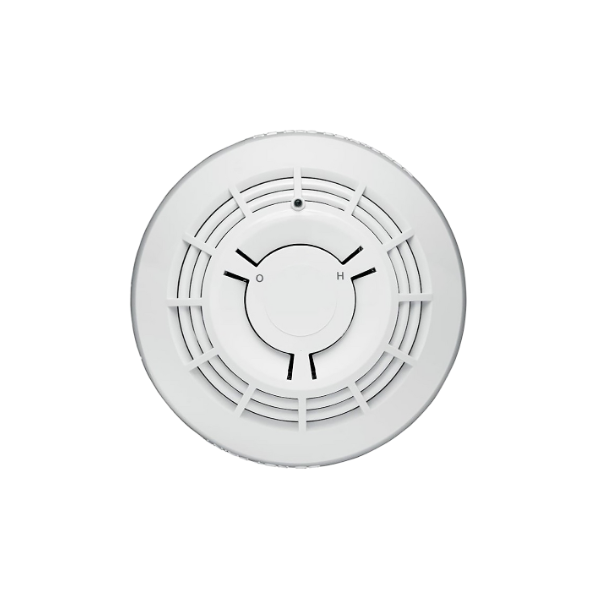Excellence series dual optical heat detector
KE-DP3021W
Features:
- Remote indicator output with short circuit isolation for additional device protection
- Nuisance alarm, steam & dust discrimination for superior false alarm immunity
- Regular automatic self testing for operational piece of mind
- Static and rate-of-rise temperature support
- Tri-colour indicators for alarm, pre alarm, isolation, fault. ItsMe, and communications takes the guesswork out of operational status
- 360° indicator visibility means no device alignment to ensure visibility
- New mechanical rotary addressing for easy addressing
- Event logging in the device for diagnostics purposes when needed
- All levels sensitivity EN54 certified
Overview:
The innovative Excellence range of intelligent addressable devices offers advanced features for reliability and peace of mind. Coupled with features for ease of installation and maintenance on new fire detection systems, it’s a perfect match for exceptional overall performance.
The DP3021W is a Kidde Excellence series, traffic white addressable dual optical and heat detector. It combines a low profile design with tri-colour status indication with 360° visibility. A remote indicator output is available as standard that supports a remote indicator up to 30 m away.
Detection reliability is ensured by combining dual optical wavelengths with multiple detection angles. This allows for state-of-the-art particle size detection that differentiates between real sources of alarm, or nuisance sources such as dust and steam. As a temperature detector Class A static and rate-of-rise modes are supported to further widen the application footprint.
The DP3021W is a Kidde Excellence series, traffic white addressable dual optical and heat detector. It combines a low profile design with tri-colour status indication with 360° visibility. A remote indicator output is available as standard that supports a remote indicator up to 30 m away.
Detection reliability is ensured by combining dual optical wavelengths with multiple detection angles. This allows for state-of-the-art particle size detection that differentiates between real sources of alarm, or nuisance sources such as dust and steam. As a temperature detector Class A static and rate-of-rise modes are supported to further widen the application footprint.


 GBP (£)
GBP (£)








